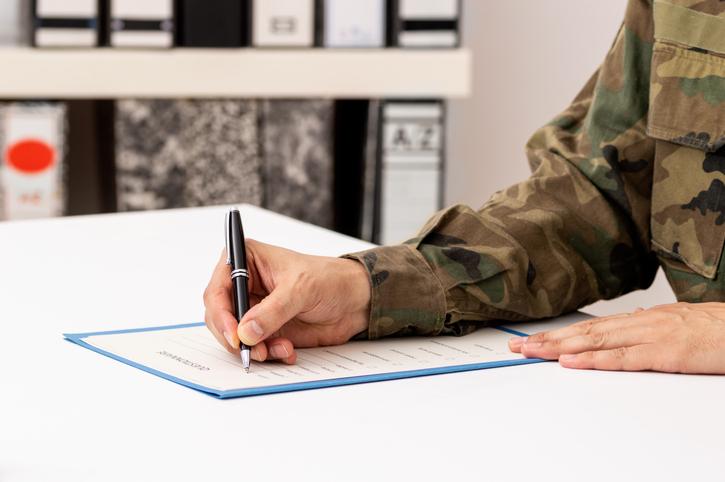
Dos and don’ts for welcoming military in the college classroom
We need to be prepared for the specific needs of active military, veterans and their affiliates and know how to work with them in appropriate, thoughtful ways, says Stone Meredith
You may also like
Popular resources
As a teacher in an online classroom at Colorado State University (CSU) Global, I find myself learning daily with a vibrant, diverse military population. For example, in my online arena, Gulf War-era veterans often learn alongside active-duty service members and their affiliates – the loved ones who stand behind them while they serve. I know of their status only if they mention it in the introductions section of the class or volunteer it in some other way, and I’m fine with that. Not all service members or their affiliates want to be identified as such. Still, as educators, we need to be prepared for their specific needs, ready to serve and address this important and growing population in appropriate, thoughtful ways.
- Belonging: why it is the next step on the equity, diversity and inclusion ladder
- Prioritising equity in higher education: the impact of individual identities
- We need systemic change in education to really tackle EDI
To that end, at my institution I am the volunteer faculty representative for our university chapter of Student Veterans of America, known as the Student Veterans Organization (SVO) at the local level. My husband is a retired air force lifer who served 25 years. Creating a welcoming culture for the US military in higher education is central to my daily mission as an educator.
While I’m still working to perfect an ideal military-inclusive pedagogy, I have learned a few methods that do and do not work well, and I’d like to explain why.
Don’t force military members to identify themselves in the classroom
Here’s why: not all military members want to share that part of their lives in the classroom. If they are forced to identify, they often feel compelled to become the “expert in the room” on issues related to the military. Military members need and deserve the same equity as everyone. If they want to speak on service-related issues, that’s great, but if not, allowing them to self-identify will leave the choice up to them.
Don’t assume that military members are comfortable sharing details of their service
According to the Veterans Administration, suicide rates among veterans are trending downwards slightly, but they are still higher than among the general population. While some service members, active or veteran, might feel totally comfortable being the “class expert” on military issues for their groups, others might find the experience triggering. Particularly in a completely online arena, such as my classrooms, we don’t know what life is like beyond the discussion boards. So don’t pry. Let the service members share what they want to share. Be there to listen.
Don’t forget to honour those who support the military – affiliates need love, too
One of the greatest lessons shared by Student Veterans of America is its pedagogical approach to those who love and support the military. Under their definition, dependants (spouses, children) and loved ones in the lives of military members are considered affiliates and are invited to join and even lead in their organisation. In fact, at CSU Global, one of our past chapter presidents was an affiliate. Again, let these folks self-identify, too. And let them share on their terms. Supporting a service member can be challenging as well, and often that experience is one the student wants or needs to keep private.
So what can and should we do as educators?
Include community events for the military in your examples and resources
Let’s say you’re writing a discussion prompt that asks students to tie a common idea to a current affair. You might use an example of a recent celebration for the military and talk about how the community embraced the return of soldiers, citing links to news stories that give more information about the organisation that sponsored the event.
This method shows that you’re aware of the military culture, but you’re not distracting from your lesson plans or forcing conversations on military actions or deployments – choices made at the federal, not troop, level.
Learn the lingo
Military and their affiliates appreciate it when you know the difference between an airman (air force), a private (army and marines) and a seaman (navy), for example.
Learn the resources
Military and affiliated students often have special needs tied to that service. Being aware of the support and resources that are available, often free of charge, is very useful. Groups such as Student Veterans of America, the Department of Defense’s Military One and the United Service Organizations (USO) are among the dozens of resources ready to educate our educators on creating a military-inclusive environment in higher education. Reach out to your school’s administration, too. Perhaps you have your own SVO chapter or other military-affiliated group and can get involved that way.
A few slight changes can create a warm, welcoming environment for our military and their affiliates. The ideas shared here are subtle and, in my experience, students notice the subtle inclusions. May we, as educators, use this standard as we greet military members and affiliates in our own classrooms.
Stone Meredith teaches college-level composition, literature and philosophy courses at Colorado State University Global. She is the founder of the Clever Chicas Project, a not-for-profit movement celebrating ordinary women doing extraordinary things.
If you would like advice and insight from academics and university staff delivered direct to your inbox each week, sign up for the Campus newsletter.




